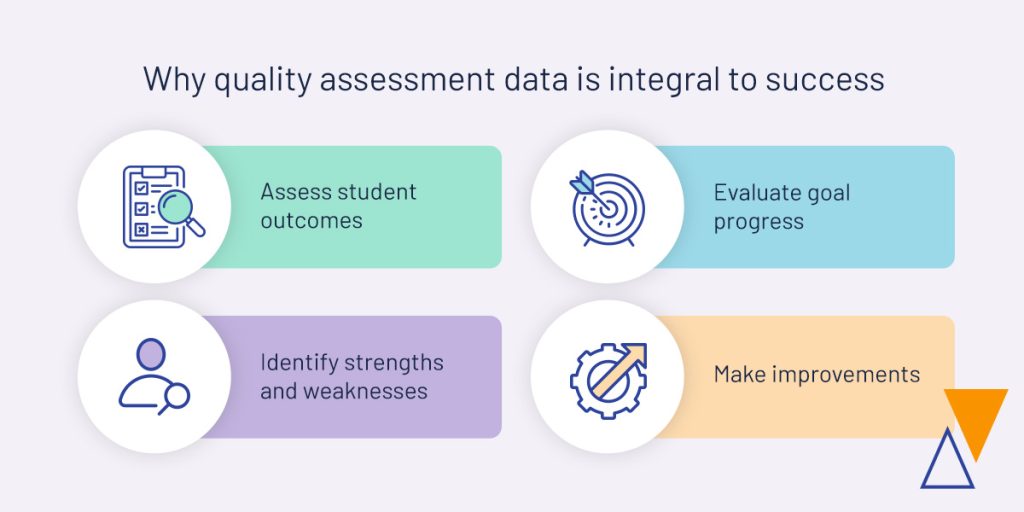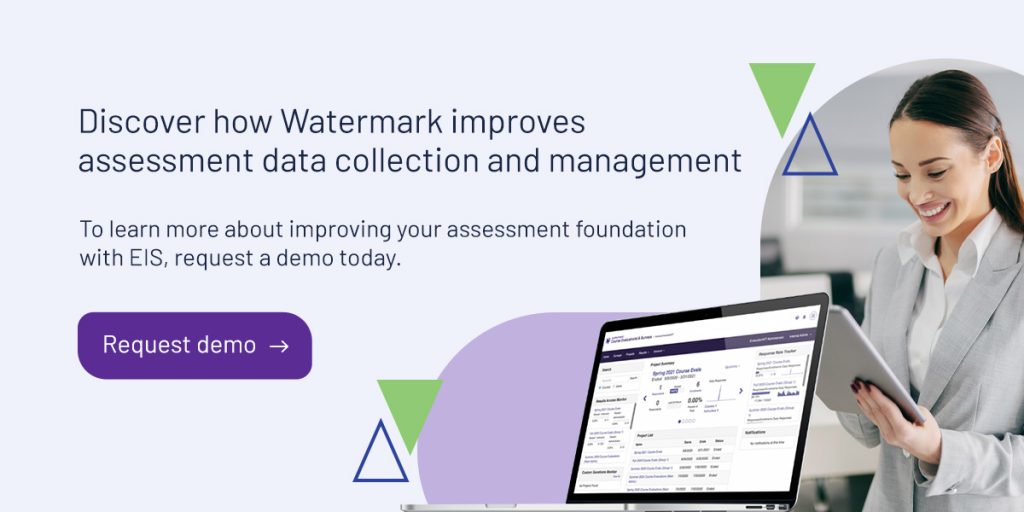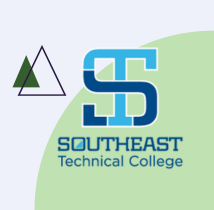
Assessment is how your higher learning institution improves the student experience, which directly impacts engagement, enrollment, and retention. That’s why it’s critical to implement assessment foundations in educational planning. Collecting and analyzing student assessment data allows you to evaluate student understanding and make informed decisions regarding curriculum development, teaching methods, and resource allocation.
In this guide, you’ll learn why some community colleges struggle with assessment and why overcoming these challenges is worthwhile. You’ll also discover what an effective assessment foundation includes and how it can benefit your institution.
The challenges of community college assessment
Community colleges differ from four-year institutions, and the differences pose various challenges for assessment:
- Flexible courses: Community colleges typically have a diverse student body, ranging from recent high school graduates to working professionals. Some students require flexible class schedules and the ability to learn from anywhere through online systems. While offering this flexibility attracts more students, it can also complicate the assessment process for community colleges.
- Program range: Another challenge for community colleges is ensuring consistency across various program types. Most community colleges offer shorter programs like certificates, associate degrees, and diplomas. Each type will have unique assessment requirements, further complicating assessment.
- Adjunct faculty: Salary costs can be a challenge for community colleges, so many prefer to hire part-time adjunct faculty, often on a temporary or contractual basis. Because they work fewer hours, they have limited time for intensive tasks like assessment planning.
- Smaller classes: Class sizes also affect assessment processes and planning. Because community colleges have fewer students, they have much smaller classes than four-year institutions. Smaller classes require unique assessment strategies that community colleges must navigate to ensure they provide the best education.
Why quality assessment data is integral to success

Despite the challenges of assessment, assessment data is vital for student and institutional success. Improving the assessment process and uncovering actionable insights can help your community college:
- Assess student outcomes: Assessment data allows your institution to assess how well students achieve learning outcomes. Learning outcomes are the skills and knowledge students should gain after completing a course or program. Assessment results also highlight which students need more support and where.
- Identify strengths and weaknesses: While assessment data primarily indicates student performance,your institution can also use it to assess the effectiveness of teaching methods and course design. Areas where students underperform may need different teaching strategies to aid in their comprehension. You may also have to adjust the curriculum to support student needs effectively.
- Evaluate goal progress: Your community college likely has specific goals for each course or program. These larger goals encompass what you want students to learn, how the learning environment should be, and what results you want students to achieve. You can use assessments to gather student feedback and performance results to analyze your progress toward these goals.
- Make improvements: The crucial insights you obtain from assessment data make it easier for faculty to adjust courses and programs to meet learning outcomes. With a more cohesive understanding of academic gaps and redundancies, you can proactively address issues that directly impact students.
Elements of effective assessment foundations
The assessment process can be difficult, which is why your institution needs a strong assessment foundation to guide faculty. With these four essential assessment foundations, you can elevate the academic experience for students, simplify complex processes, and turn data into action.
1. Quality outcomes and objectives
Generating clear objectives and defining themes for outcomes is the starting point for any assessment foundation. However, it’s important to differentiate between outcomes and objectives as you design them. Objectives are the projected goals you want your students to achieve, while outcomes are the results of their course or program.
By comparing the original objective to the outcomes, you can improve teaching methods and identify students who need support. These practices can improve retention and create a better student experience.
2. Curriculum mapping
Understanding the purpose of curriculum mapping and troubleshooting common problems can often be a challenging second step in your assessment foundation. However, there are ways to simplify the curriculum mapping process to develop a rich curriculum that supports student learning.
Your institution must endeavor to interlace course outcomes and objectives with overall program-based outcomes. Curriculum maps help support this initiative by assisting instructors in ensuring every student accomplishes what they need to advance up the education ladder. Additionally, everyone across your institution will have a better idea of what students learn and when they learn it. Consequently, collaboration and engagement may improve.
3. Direct and indirect measures
The next step involves exploring the properties and benefits of both direct and indirect measures. Direct measures offer quantitative proof of student learning. For instance, instructors might use quizzes, presentations, or reports to directly measure academic proficiency. Alternatively, indirect measures look at student thoughts and opinions. They can involve student retention statistics, self-reported surveys, and course evaluations.
Your institution can benefit from using a combination of direct and indirect measurements, as this approach gives a comprehensive overview of student and institutional success.
4. Data-informed decisions
Once you’ve gathered assessment data, focus on using best practices for organizing and analyzing data. On its own, data can be overwhelming and provide little insight into the student experience. However, organizing it and looking for trends and patterns gives you a deeper understanding of students and what you can improve to meet their needs.
Using assessment data this way can ensure that your institution makes decisions with every student in mind going forward. Making data-informed decisions also enables more agility within your institution, letting you adjust your improvements and initiatives to evolving student needs.
Discover how Watermark improves assessment data collection and management
At a community college level, effective assessment can feel time-consuming, especially with limited resources. That’s why Watermark offers higher educational software to make the assessment process faster and simpler. We know just how powerful data can be for driving institutional development, and we want you to harness it.
Watermark Educational Impact Suite (EIS) will help you transform your assessment practices to drive growth. EIS makes it easy to design, administer, and analyze assessments in one centralized location, making data accessible and reducing administrative work. You can define your mission, goals, and outcomes and monitor progress throughout the assessment cycle. The software also supports you in integrating indirect measures and rubric-based assessments to gather valuable feedback and ensure data consistency.
To learn more about improving your assessment foundation with EIS, request a demo today.

































































































































































































































































































































































































